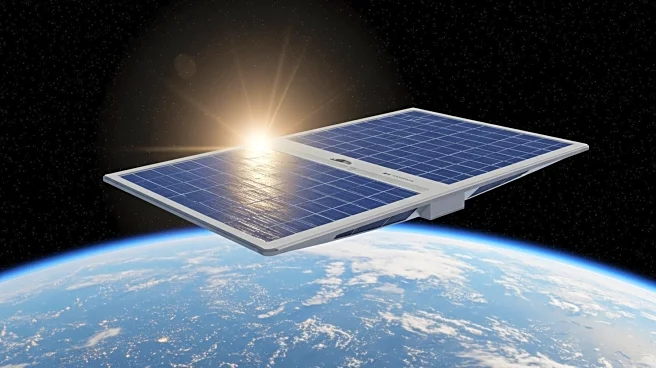What is the story about?
What's Happening?
Researchers at Harvard John A. Paulson School of Engineering and Applied Sciences have successfully tested tiny devices propelled by sunlight in near-vacuum conditions, similar to those found in Earth's upper atmosphere. These devices utilize photophoresis, a phenomenon where temperature differences across a thin membrane create motion. The experiment demonstrated that 0.4-inch-wide membranes could float in a vacuum chamber when exposed to light, simulating conditions in the upper atmosphere. This region, known as the ignorosphere, is difficult to study due to its altitude, which is too high for aircraft and too low for satellites. The devices could provide precise data on winds, temperatures, and pressures, enhancing global climate models.
Why It's Important?
The development of these sunlight-powered devices could revolutionize atmospheric science by providing accurate data from the ignorosphere, a region critical for understanding geomagnetic storms and climate dynamics. This advancement could improve space weather forecasts and fill gaps in climate models, benefiting industries reliant on satellite data and power grid stability. The technology also holds potential for studying Mars' atmosphere and competing with satellite broadband services, offering new avenues for scientific exploration and commercial applications.
What's Next?
The researchers plan to refine the material and structure of the devices to decrease their weight, enabling larger versions capable of carrying sensors and antennae. These devices could be released from stratospheric balloons to self-propel to higher altitudes. The startup Rarefied Technologies, spun out from Harvard SEAS, aims to commercialize these devices for atmospheric experiments. Future applications may include Mars exploration and communication networks rivaling satellite constellations.
Beyond the Headlines
The technology, inspired by theoretical work on geoengineering, could offer passive, sunlight-powered solutions for climate intervention if carbon emissions are not reduced. The devices' ability to remain in the upper atmosphere during the day and sink at night could lead to innovative approaches in atmospheric research and environmental monitoring.
AI Generated Content
Do you find this article useful?











